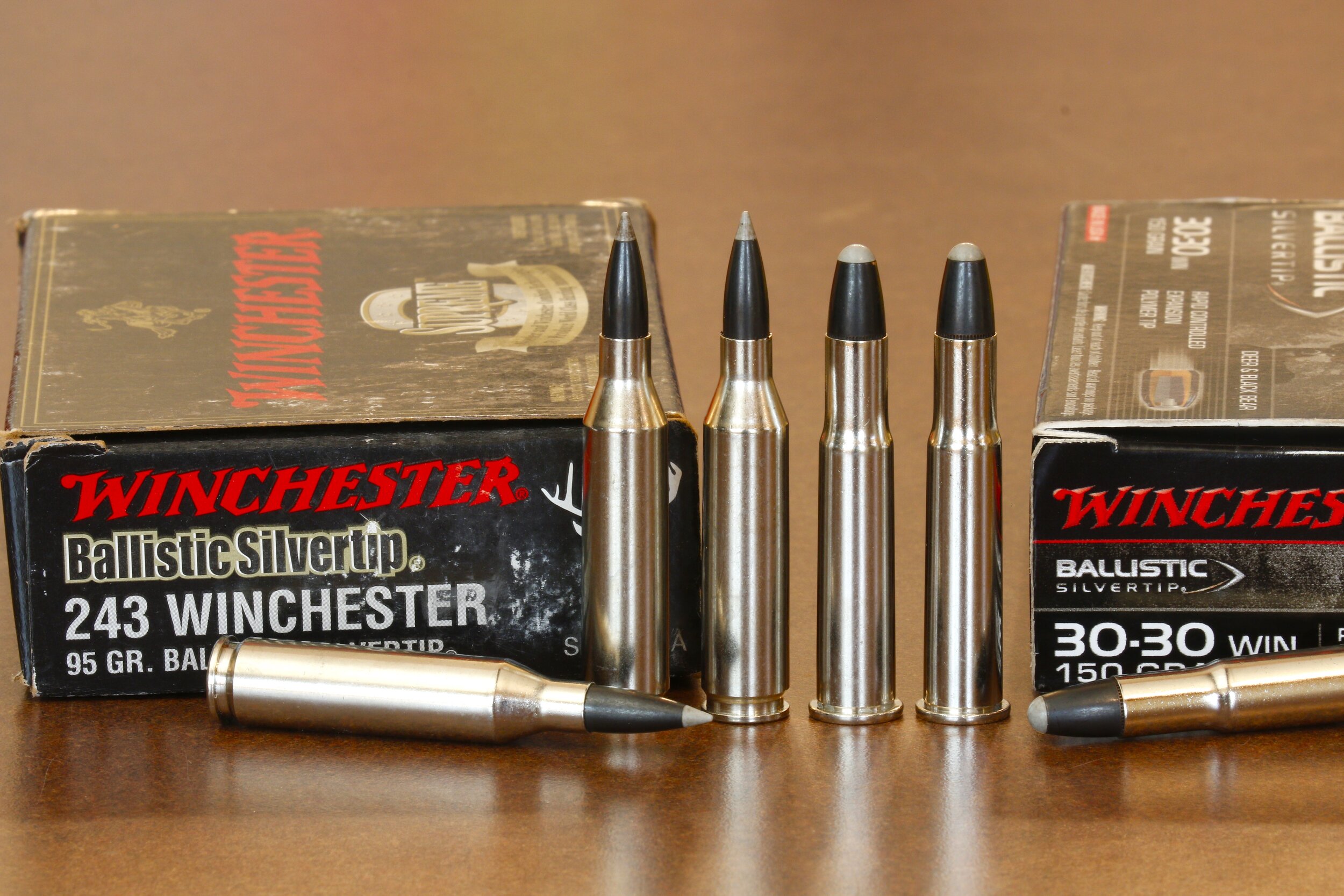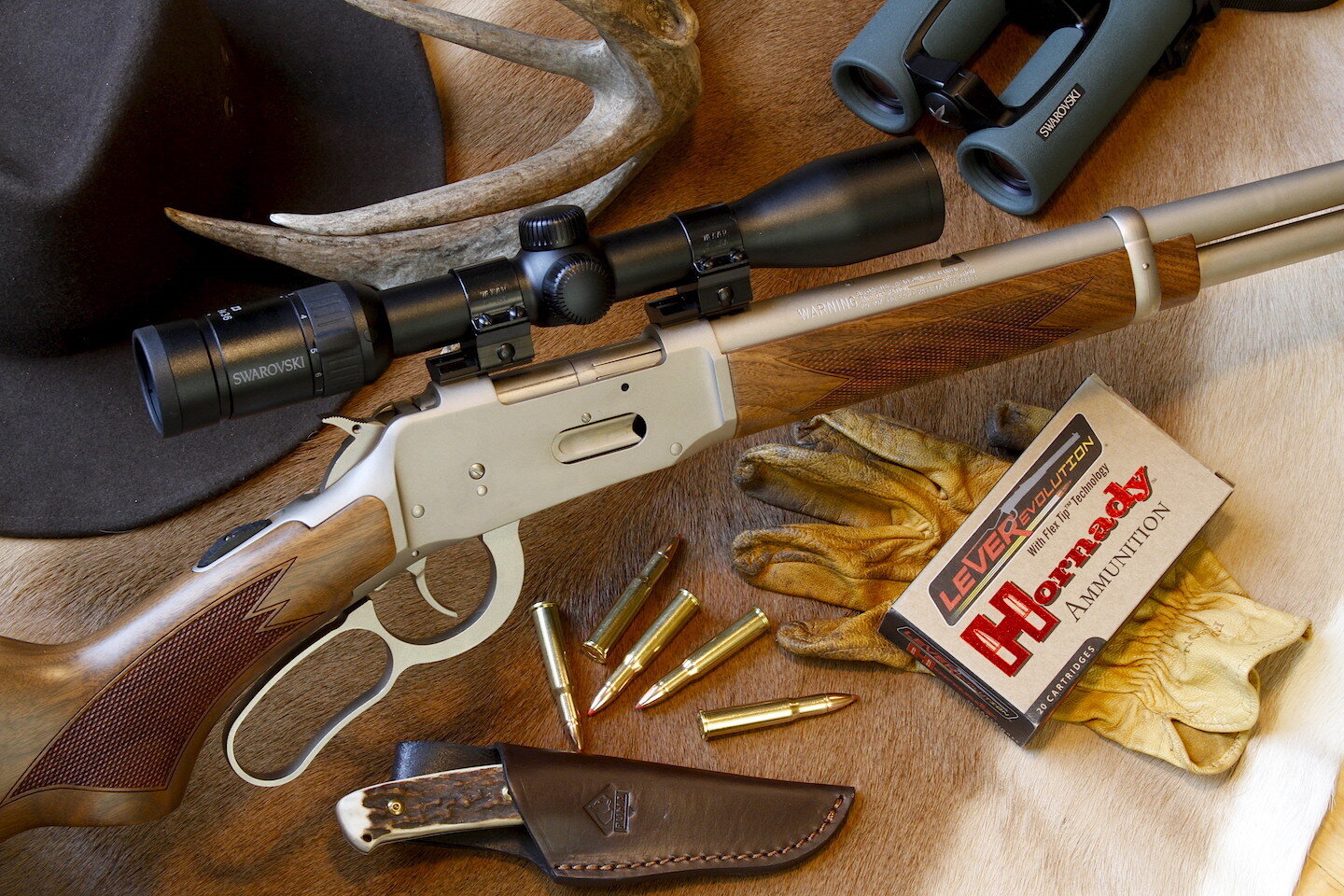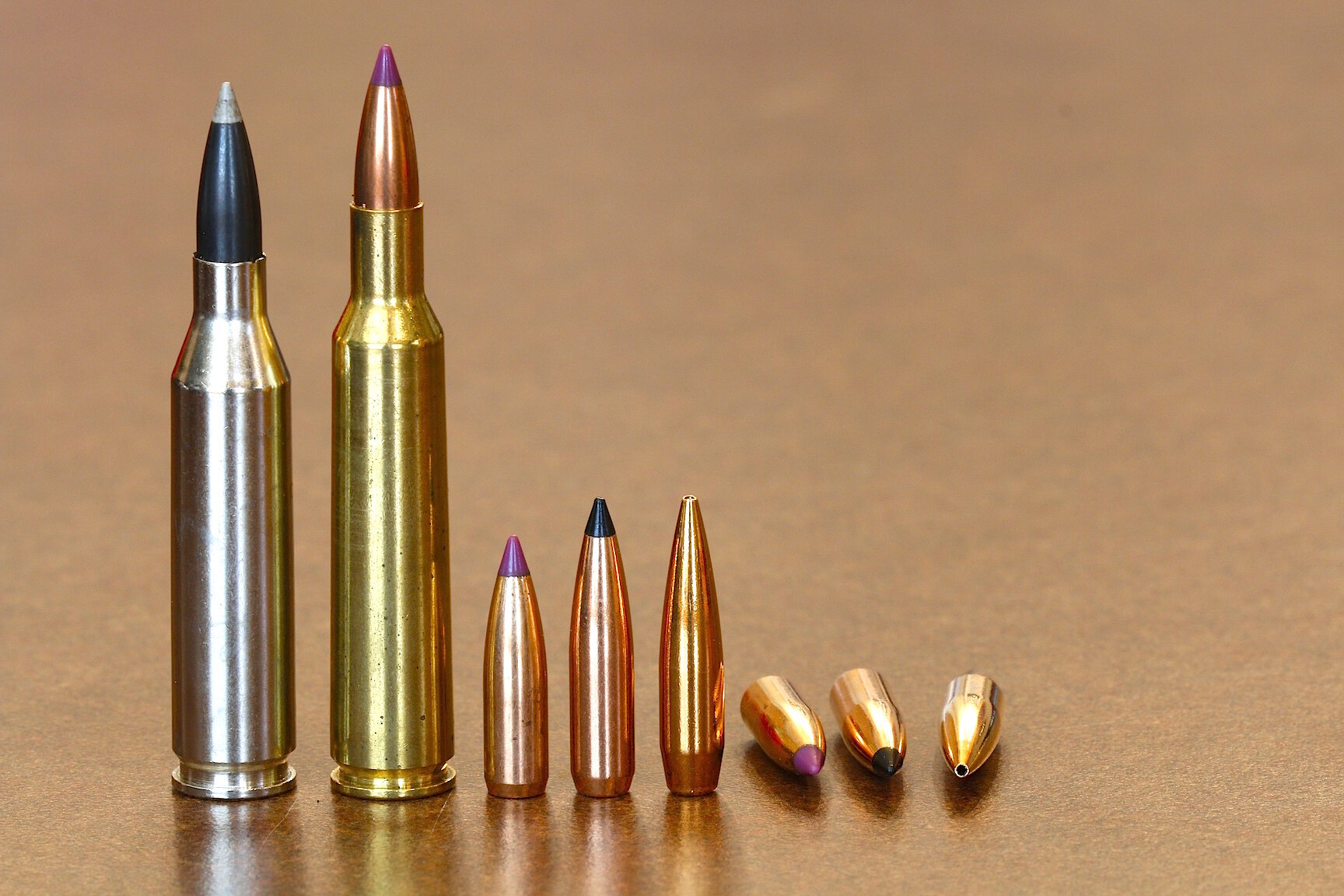243 Winchester vs. 30-30 Win.
The maligned 243 Winchester actually hits harder than the revered 30-30 Winchester.
The sun was on the Nebraska horizon and a Mossberg 243 Winchester bolt-action was on my shoulder when a herd of November whitetails exploded from a copse of trees and scattered into the Sandhills. Flashing tails, leaping legs, long necks and there! Antlers! Wide, tall, oh-my-god-he's-a-big-one and he's getting away.
Like every whitetail, he raced for the horizon, showing no signs of stopping. I sat anyway, spread my shooting sticks, bolted a Ballistic Silvertip into the little rifle and prayed. Stop.
She did. The buck hadn't been running from me so much as running after an estrus doe. In the confusion of flight she looked back for the rest of her herd. Wither she stoppeth, he stoppeth. Three hundred eighty seven lasered yards, dark against the hillside, antlers like a halo. It was a big job for a 95-grain bullet. Was the 243 Winchester up to it?
As hunters and riflemen, we might want to reassess some of our assumptions because they’re probably based on hearsay, tradition, superstition, folklore or myth. Put simply, we’ve heard it so many times that we believe it. And repeat it.
This is why so many hunters think a 243 Winchester is too puny to kill a deer. No one told that Nebraska buck.
So let’s check some hard numbers for enlightenment, starting with the often repeated minimum energy standard for termination of an average whitetail: 1,000 foot-pounds of energy. How this number was chosen I do not know, but it is widely accepted, ignoring the thousands of deer, perhaps millions, poked with arrows and poached with 22 Long Rifles. A typical high-velocity 40-grain .22 LR hollow point generates about 140 f-p energy at the muzzle, 100 f-p at 100 yards.
Lever-action rifles like this Mossberg M464 shooting the venerable 30-30 Winchester are considered the perfect medicine for whitetail hunting.
But let's forget the .22 LR and focus on a famous whitetail killer -- the 30-30 Winchester. This is widely regarded as the greatest deer round in history, responsible for putting more venison on the ground than any other cartridge. Virtually every deer hunter agrees it is deadly at 150 yards, more than adequate at 200 yards if you can hit what you’re aiming at.
Similarly, the 308 Winchester is regarded as a decided improvement over the 30-30, since it throws the same .308 caliber bullets, but much faster. Meanwhile the poor little 243 Winchester, which is the 308 Winchester case necked down to accept 243-caliber bullets, is suspect. Too little. Too weak. But is it?
The 243 Winchester is just the 308 Winchester necked down to 24-caliber. It hits harder at 300 yards than the 30-30 does at 150 yards.
Let’s run some ballistic trajectories on each of these, using popular deer hunting bullet weights as examples. We’ll zero each rifle at 200 yards to get a fair picture of trajectory curves. We’ll fire all of them in the same weather conditions, calm and 65-degrees F. with a 10 mph right angle wind.
Trajectory and energy tables indicate the 243 Winchester isn't the 98-pound weakling some make it out to be.
From this little comparison you’ll note some eye-opening numbers, especially between the 30-30 Win. and .243 Win. The 243 Win. starts with a bullet weighing 55 grains less than the 30-30, but its additional 750 fps muzzle velocity gives it 213 f-p more energy at the muzzle. This is because doubling a projectile’s weight doubles its kinetic energy, but doubling its velocity quadruples its kinetic energy. The joys of physics.
Something else enlightening is retained energy downrange. At 150 yards the 95-grain .243 bullet is hauling 522 f-p more energy than the much heavier 30-30 slug. At 400 yards the puny, ineffective 243 is still packing more punch (1,077 f-p) than the 30-30 at 150-yards, what many consider “dead deer” distance for the famous 30-30. How did that happen? B.C.
Ballistic coefficient, or B.C., is a numerical rating that reflects a projectile’s ability to minimize air drag and retain velocity/energy, two sides of the same coin, according to Einstein. Note the B.C. of the .243 bullet listed above. It is more than double that of the 30-30 slug. The short, stumpy, round nose form of the 30-30 wastes its energy pushing air. The long, sharply pointed, sleek, boat-tailed shape of the Berger Very Low Drag 243 bullet minimizes air drag.
The 243 Win. isn't the only deadly effective 24-caliber in the deer woods. The 6mm Rem. is equally effective, as are several others that throw these long, lean and ballistically efficient .243" bullets.
You might also notice how the 243 deflects less in the wind than not only the 30-30, but even the 150-grain .308. This runs counter to another popular misconception — that heavier bullets drift less than lighter ones. It isn’t bullet weight but B.C. and velocity that influence wind deflection. Weight is part of B.C., but so is form. As long as two bullets start with the same MV and have the same B.C. rating, it doesn’t matter how heavy they are. They deflect the same amount.
Some might argue that the larger diameter of the .308 bullets makes them “hit harder” than the .243 bullet, but really? The energy figures clearly show otherwise. And as for physical effect, do we really think that extra 0.065-inch diameter of bullet difference is going to change much? A 0.065-inch wider bullet? I doubt it.
Terminal bullet performance has less to do with diameter than with how the bullet reacts mechanically. How much does it expand? How deeply does it penetrate? Does it ball up into a smooth lump or spread into sharp edges? Does it fragment and distribute tissue-tearing particles widely or remain in one piece to cut a narrow but long channel?
Having witnessed the impact of dozens of .243 bullets of many styles and construction on dozens of whitetails, pronghorns, feral hogs, coyotes, bobcats and even one zebra stallion, I’m convinced the 243 Win. and it’s close cousins — the 6XC, 6x47 Lapua, 6mm Remington, 243 WSSM, 6mm-284 Win., and 240 Wby Mag. — are effective deer hunting cartridges.
A forked G2 and broken brow tine stood between this buck and B&C. Mossberg's ATR in 243 Win. was zeroed with a Redfield 3-9x50mm Revolution scope. With Winchester Supreme 95-gr. Ballistic Silvertip loads, the rig often clustered 3 shots minute-of-angle. In this instance, one shot went minute-of-whitetail.
# # #


















